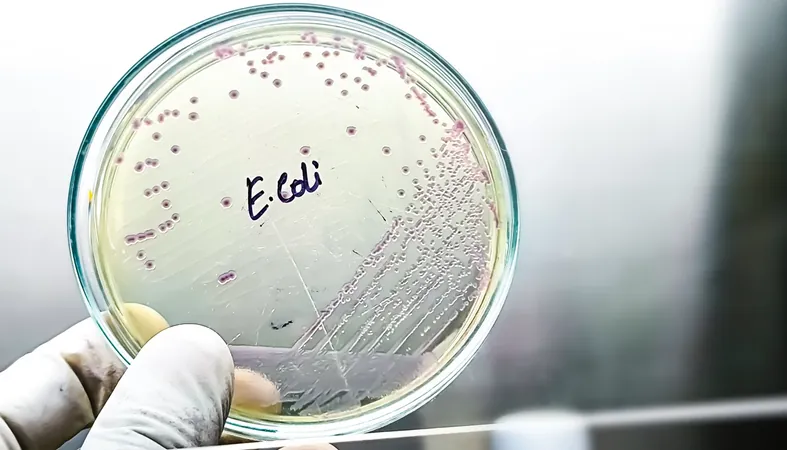
Revolutionary CRISPR System Transforms Deadly E. Coli into Harmless Bacteria!
2025-07-28
Author: Emma
Turning Toxins into Health Benefits!
Antibiotics have long been hailed as lifesavers, but they can backfire in the battle against certain bacteria. Shiga toxin–producing Escherichia coli (E. coli) exemplifies this paradox, as the death of these bacteria unleashes a deadly toxin into the body. However, a groundbreaking new gene-editing strategy could change the game!
Meet BACTRINS: A Game-Changer in Gene Editing!
Developed by a team led by Harris Wang at Columbia University, the innovative system known as Bacterial CRISPR–Transposase Reduction of Virulence In Situ (BACTRINS) aims to neutralize harmful E. coli without obliterating them. This cutting-edge approach harnesses the power of CRISPR-Cas and transposases to reprogram the bacteria, transforming them from villains into allies!
How Does It Work?
BACTRINS works its magic by targeting the genes responsible for toxin production, stx1 and stx2. Using guide RNAs, the CRISPR components lead the way to stable regions of these genes. Instead of cutting, they cleverly insert new DNA that disrupts the toxin's production. The result? No double-stranded breaks and fewer chances for the bacteria to evolve resistance.
An Added Twist: Producing Protective Nanobodies!
But Wang and his team didn’t stop there! The inserted DNA also programs the bacteria to produce nanobodies—tiny protein superheroes that stick to Tir, a surface protein crucial for pathogenic E. coli's attachment to gut cells. By knocking out Tir, these engineered microbes throw a wrench in the bacteria's efforts to establish infections.
From Lab to Life-Saving Potential!
In their experiments on mice infected with E. coli, the results were astounding. Untreated mice faced fatal outcomes, while those receiving BACTRINS saw toxin levels plummet by two-thirds, significantly boosting survival rates! Although not all treated mice survived, Wang emphasizes that this strain poses a greater threat to mice than humans, hinting at a promising outlook for clinical applications.
Expert Opinions and Future Directions!
Byeonghwa Jeon, a bacterial pathogenesis expert from the University of Minnesota, hailed the study as a major breakthrough. However, he echoed the necessity for more research before BACTRINS can be unleashed in real-world clinical settings.
A Broader Vision for CRISPR!
With the versatility of CRISPR-Cas systems evident, Wang envisions BACTRINS being applicable to various bacteria across different environments—potentially even soil microbes! The researchers are now exploring strategies to enhance beneficial effects in friendly microbes, aiming to expand the genetic toolkit available for combating infections.
The implications of this innovative study are vast, and as researchers delve deeper, we may soon witness a revolutionary approach to fighting bacterial infections!









 Brasil (PT)
Brasil (PT)
 Canada (EN)
Canada (EN)
 Chile (ES)
Chile (ES)
 Česko (CS)
Česko (CS)
 대한민국 (KO)
대한민국 (KO)
 España (ES)
España (ES)
 France (FR)
France (FR)
 Hong Kong (EN)
Hong Kong (EN)
 Italia (IT)
Italia (IT)
 日本 (JA)
日本 (JA)
 Magyarország (HU)
Magyarország (HU)
 Norge (NO)
Norge (NO)
 Polska (PL)
Polska (PL)
 Schweiz (DE)
Schweiz (DE)
 Singapore (EN)
Singapore (EN)
 Sverige (SV)
Sverige (SV)
 Suomi (FI)
Suomi (FI)
 Türkiye (TR)
Türkiye (TR)
 الإمارات العربية المتحدة (AR)
الإمارات العربية المتحدة (AR)